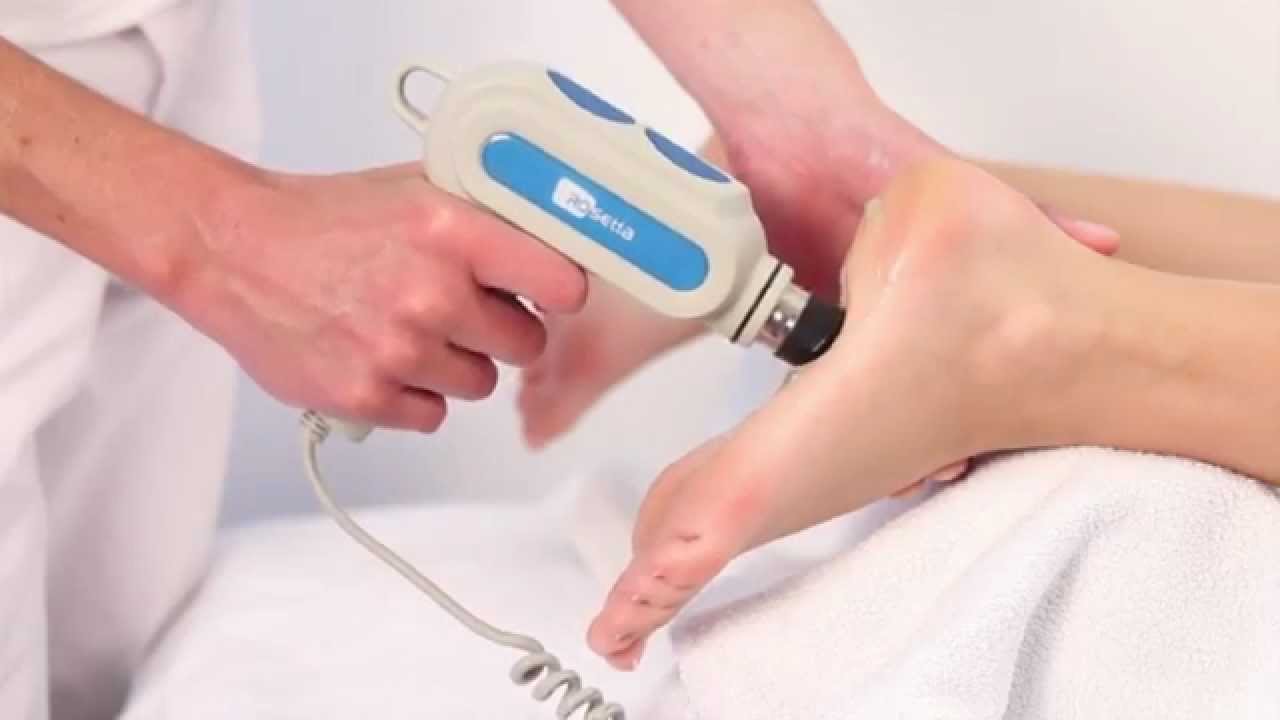
Shockwave - heel spur treatment
Shock wave is one of the modern methods of physical therapy. The scope of the shock wave application includes the treatment of diseases mainly affecting tendons, ligaments and their attachments to the bones. Heel spurs (plantar fasciitis), tennis elbow or jumper's knee are effectively treated. The shock wave reduces long-term pain that has not been alleviated by other methods of rehabilitation. The awareness of the high effectiveness of the shock wave is still growing - shock wave treatments are increasingly recommended by orthopedists and experienced podiatrists. Heel spur is a condition that is very well amenable to shock wave therapy.
Heel spurs - symptoms
A typical symptom of a heel spur is heel pain, which is strongest in the morning when you take your first steps after getting out of bed. Heel pain can make walking much more difficult - its worsening sometimes makes it impossible to fully load the foot. Symptoms usually build up slowly, and neglecting the problem leads to an exacerbation of symptoms that prevents normal functioning. Therefore, it is very important to detect the problem early and implement appropriate treatment.
Heel spurs - causes
The pain symptoms associated with the heel spur are actually the result of plantar fascia inflammation. The plantar fascia is a connective tissue band that attaches to the tumor of the calcaneus and extends all the way to the toes. The aponeurosis is designed to support the longitudinal arch of the foot. Overload caused by prolonged walking, standing position, foot defects or wearing inappropriate shoes can lead to an overload of the aponeurosis and the appearance of pain.
Shock wave in the treatment of heel spurs
Overload and microtrauma of the aponeurosis lead to its degeneration and abnormal scarring. Neglected heel spurs are often difficult to heal with classical methods. The treatment process can take up to months. Shock wave treatments are a rescue for people for whom exercising or wearing orthopedic insoles did not bring a satisfactory result or when we want to achieve a quick effect in a shorter time.
Recommendations
in the case of the initial phase of plantar fasciitis, 3-5 meetings are recommended at intervals of 7 days
in the case of an advanced stage of plantar fasciitis, 5-7 meetings are recommended at intervals of 5-7 days
Feelings during and after the procedure
The shock wave is effective but painful for some people. During the procedures, the physiotherapist will try to cover the painful point and the surrounding area. After the treatment, there is a feeling of relief and improvement.
Heel spur shock wave:
It affects:
- Pain in the area of the calcaneus appearing when loading the diseased foot.
- Reduces inflammation of the periosteum of the calcaneus, inhibiting further growth of the spur.
- Plantar fasciitis.
The influence of an electromagnetic wave on the heel spur:
- Pathological breakdown of the calcifications formed in the heel spur structure,
- Pain relief,
- Reduction of the inflammation of the plantar fascia.



